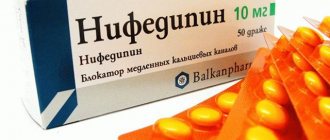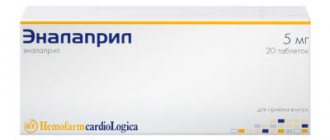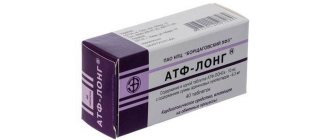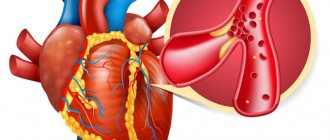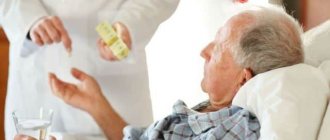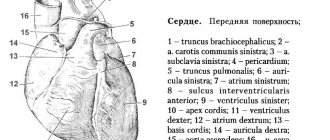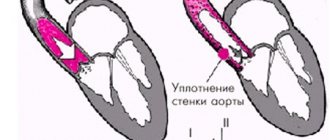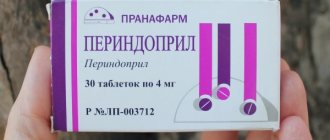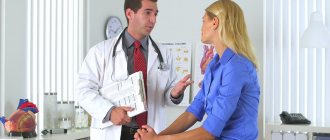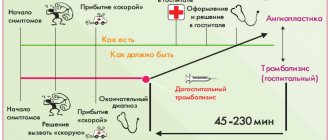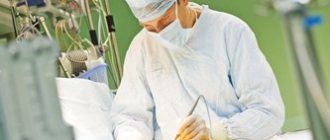There are many methods for solving problems with appearance and health. Some of them were used several centuries or decades ago and, despite the advent of new methods and developments, continue to be used today. One of them is autohemotherapy. To understand who can attend autohemotherapy sessions and who cannot, it is worth studying all the information about the method. This article contains the most complete information about the procedure, its implementation, history and, of course, recommendations for its implementation.
What it is
A method based on the injection intramuscularly or under the skin of a person of his own blood taken from a vein is called autohemotherapy. There is no need to worry about the quality of the biomaterial - when performing this relatively simple procedure, the patient is injected with his own biomaterial or the blood of his closest relatives. The technique refers to immunocorrective therapy, that is, it is aimed not at treating the patient as such, but at strengthening his immunity. It is especially actively used in the dermatological direction.
Autohemotherapy appeared at the dawn of the twentieth century. In 1905, the first procedure was described and then applied by a doctor named August Beer. Most often, the doctor used it to speed up the treatment of bone injuries - fractures. In this case, hematomas were artificially created.
The technique was actively used during the Russo-Japanese War by doctor Valentin Voino-Yasenetsky to treat injured soldiers. This specialist also described the technique, noting that it is an excellent auxiliary method in the treatment of a number of indolent pathologies.
On a note! Autohemotherapy is a method that was actively used until antibiotics were discovered.
Autohemotherapy can increase immunity and generally improve tone, giving strength to the body. With its help, they fought a number of skin pathologies associated with impaired immunity. This is furunculosis, chronic inflammatory processes. Diseases of the female reproductive system were also treated using autohemotherapy. However, no official evidence of the positive effect of the technique has been provided. Therefore, at that time it was gradually and completely replaced by antibiotics. Now it is still used in the treatment of a number of pathologies and in cosmetology.
Operating principle
The procedure consists of collecting the patient's venous blood and then injecting it under the skin, intramuscularly or intravenously. With such manipulation, the body associates its own blood with a foreign substance. The process of maximum production of protective cells begins, which subsequently recognize the blood as “native”. Therefore, the action of the produced cells is redirected to pathological processes in the body.
The effect of autohemotherapy is to activate the immune system.
The results of such procedures:
- activation of protective processes in the body;
- activation of metabolic reactions;
- increased vitality;
- activation of brain and physical activity;
- accelerating wound healing and stopping the development of purulent processes;
- accelerating the removal of waste and toxins from the body.
Scheme of autohemotherapy for boils
The technique according to the classical scheme is quite simple: blood is taken from a vein and injected into the gluteal muscle. The treatment regimen consists of 10–20 procedures. For the first 10 days, the introduction is increasing. On the first day, 1 ml is administered, then every day the blood volume is increased by 1 ml, and on the 10th day it is 10 ml. Then a descending scheme is applied - by 1 ml every day. There are schemes of 10 procedures. The blood volume is increased every day by 2 ml, brought to 10 ml, then decreased daily by 2 ml and brought to 2 ml. If the procedure is prescribed along with medications, then they are additionally added to the syringe before injection into the muscle.
Major autohemotherapy is somewhat reminiscent of a blood transfusion procedure. It can only be carried out by a qualified specialist. For this, venous blood is taken in a large volume (100-150 ml). Then it is specially prepared for re-injection into the vein, it is specially shaken, an ozonation technique is carried out, medicinal substances are introduced, or a special device is used for ultraviolet treatment (directly during the re-infusion of blood). The procedure must be done according to a strict regimen using Heparin.
Autohemotherapy is a cosmetic procedure. It consists of subcutaneously or intramuscularly injecting the patient with his own blood, previously taken from a vein. To put it simply: this method is based on the theory that the disease itself helps in eliminating the disease. It is believed that blood can “remember” information about pathologies. And if you introduce it again, it will quickly find the source of the disease and eliminate it. In each case, autohemotherapy regimens are adjusted to suit the patient. But the principle of the procedure always remains the same.
Classical autohemotherapy - treatment regimen
This technique involves taking blood from a vein in the arm and then injecting it into the muscles of the buttock. For the first procedure you will need 2 ml of blood, for the second - 4 ml and so on. Doses are increased until the volume reaches 10 ml.
Injections according to the classical scheme are done every day or every other day. Sometimes after administering 10 ml, several more procedures are performed. In this case, blood volumes are reduced to 2 ml.
Scheme of minor autohemotherapy with ozone
First of all, 5 ml of an ozone mixture with oxygen is drawn into a syringe, and then up to 10 ml of blood is obtained from a vein. The contents are carefully but very carefully mixed and injected intramuscularly (usually into the gluteal muscle).
Major autohemotherapy with ozone
100-150 ml of blood should be collected in a special sterilized container. Afterwards you need to add it, which will prevent folding. The next step is the introduction of ozone diluted with oxygen (100-300 ml). The medicinal liquid is mixed for 5-10 minutes and then injected into a vein.
Autohemotherapy regimen with antibiotics
Antibiotics are added to the blood to increase the effectiveness of treatment. It is advisable to carry out such therapy when the body is damaged by bacteria. The antibacterial drug is selected individually in each case.
An infusion of blood with an antibiotic is carried out according to the traditional scheme: 2-5 ml of blood drawn into a syringe is mixed with the medicine and an anticoagulant. The duration of therapy is determined for each patient separately, but as a rule, it is at least 15 sessions.
The treatment regimen for autohemotherapy with calcium gluconate or aloe differs little from all those described above. But they are carried out strictly as prescribed by a specialist. Otherwise, the procedure may negatively affect the condition and functioning of internal organs and cause.
Today there are a large number of procedures, both invasive and non-invasive, designed to normalize the functioning of the body and treat various diseases.
In order to achieve maximum and, importantly, high-quality results, various effects on the human body are used. Not only electrical influence is used, but also vibration and injection. These techniques are known to many.
Let us pay attention to one of the little-known methods - autohemotherapy: indications and contraindications for it, as well as its therapeutic effect. The procedure involves treating pathologies with the patient’s own blood. This method is not yet very widespread, and many may not have even heard of it. This technique is effective, as it helps not only in improving general well-being, but also in the treatment of various diseases.
What is hemotherapy and where did it come from?
Autohemotherapy refers to cosmetic and therapeutic manipulations carried out by intravenous or intramuscular injection of a person’s own blood. This method is based on the principle of “therapy of like with like.” The history of the appearance of this treatment method goes back to the distant past.
The first successful experience of treatment with one’s own blood was described by the surgeon August Beer in 1905.
He used a method of creating an artificial hematoma for the treatment of fractures. Subsequently, the doctor treated various ailments, including furunculosis, using hemotherapy. Today, hemotherapy is part of immunostimulating treatment. In addition, it is widely used in cosmetology.
Effect of the procedure
It is important, before using autohemotherapy, to familiarize yourself with the indications and contraindications. Like any other medical procedure, autohemotherapy is not allowed for everyone. This technique has quite wide application both in medicine, in particular gynecology, and cosmetology.
The principle of action is based on the correction of the body’s protective properties. In the area where blood transfusion is performed, the inflammatory process is neutralized, pathogenic microflora is destroyed, and tissue healing processes are stimulated. According to patient reviews, the technique is effective. The cost of the procedure is not high. The price of classical autohemotherapy is 800 rubles, stepwise - 1300, small with ozone - 1100.
Autohemotherapy is a safe procedure. It has no negative consequences. People who have already used the technique speak only positively about it. According to their reviews, hemotherapy helps to increase the body’s performance, rapid wound healing, and increase the body’s protective properties.
Indications
The minimum number of contraindications and side effects combined with high efficiency have made this method one of the most popular in the treatment of chronic and indolent pathologies.
Hemotherapy is effective in the treatment of:
- chronic cytomegalovirus infection;
- infertility;
- genital herpes;
- condylomatosis;
- papillomatosis;
- adhesions in the pelvis;
- menopause;
- inflammatory process in the ovaries;
- acne, pimples;
- psoriasis.
This treatment method is safe and can be performed even on children. Moreover, it can be done at home. Before using this treatment method, you should consult your doctor.
When carrying out treatment at home, it is important to have minimal medical skills, use the classical technique, adhere to dosages and regimens, and also maintain sterility.
According to reviews of those who have undergone therapy, hemotherapy promotes:
The manipulation is simple and involves gradually increasing the blood transfusion. Course duration is 10-12 procedures. The first procedure involves a transfusion of one or two milliliters of blood. Subsequently, the dosage is increased by several milliliters. The maximum dose of blood is 10 ml. There are several options for therapy with your own blood.
- Classical autohemotherapy.
The patient is injected subcutaneously or intravenously with clean, fresh own blood. Biological fluid is usually administered intramuscularly. In order to prevent the appearance of seals, a heating pad is applied to the puncture site. On the first day of therapy, two milliliters of blood are administered. Subsequently, every two to three days the dosage is increased by two milliliters. The maximum dose is 10 ml. - Stepped.
It consists of mixing biological fluid with ozone, which enhances the therapeutic effect, as well as increasing the effectiveness of the treatment of gynecological ailments. - Small with ozonation.
The manipulation scheme is usual (gradual increase in the volume of biological fluid). The peculiarity of this option is mixing blood with substances containing oxygen and ozone. - Big ozone.
With this treatment option, blood is administered not only subcutaneously and intravenously, but also intra-articularly. The essence of the technique is to take blood and mix it with an ozone-containing solution. The peculiarity of this type of autohemotherapy is the individual selection of dosage. - With an antibiotic.
This method is effective in the treatment of furunculosis, rashes, and skin irritations. The technique helps to quickly cure the disease. - Biopuncture.
Blood is taken from the patient, and then pure blood, or mixed with homeopathic medicines, is injected into painful points. This technique helps speed up the therapy process. - Autoblood method.
With this option, the blood is exposed to low temperatures or ultraviolet radiation, and then injected into the body.
Indications and contraindications for autohemotherapy can be clarified with your doctor. This technique is effective and will help normalize the functioning of organs and systems in the shortest possible time.
How is the procedure performed?
The technique is based on the fact that a person who applies for the procedure has his own blood taken from a vein and then returned to the patient’s body by injection, but subcutaneously, intramuscularly, or less often intravenously. The blood is taken right before the injection, that is, it is absolutely fresh. Typically, the injection is made in the buttock area, at its top edge. Interestingly, when taking blood from the left arm, it must be injected into the buttock on the right, and vice versa.
After returning the biomaterial to the injection site, it is recommended to apply a heating pad to avoid the occurrence of infiltrates. These are areas of tissue where a large number of special cellular elements accumulate with an increase in volume and increase in tissue density. Also, in order to prevent infiltrates, you can apply an iodine mesh to the injection site or make alcohol compresses.
In the classic version, the blood is administered in the same form as it was taken, but in certain cases it can be ozonized or otherwise processed. When ozonated, it will be enriched with oxygen. Sometimes the blood is enriched with calcium. This option is usually recommended for furunculosis to improve the condition of the skin or joints. Also, in some cases, blood can be irradiated with X-rays or frozen, and be subjected to other influences.
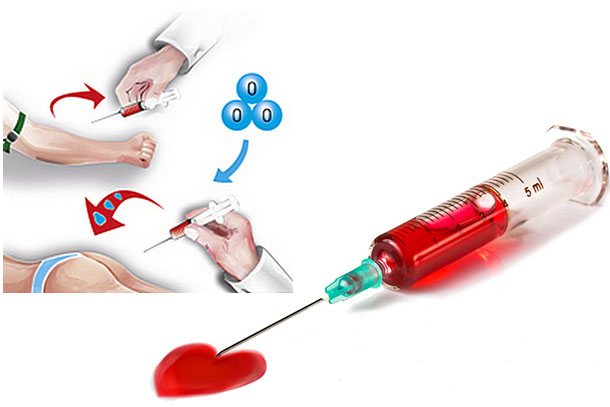
When mixing blood with any additional components, do not shake the syringe. Mixing is done carefully, using the technique of rolling a vessel with blood or other. There should be no air bubbles inside the syringe - when blood with bubbles is injected, an embolism may occur.
Important! The procedure must be performed under sterile conditions.
The treatment regimen is always selected individually, depending on the patient’s health condition, and also depending on what they are trying to combat with the help of autohemotherapy. Taking these factors into account, the volume of blood taken and the number of sessions that the patient will have to attend throughout the course of treatment are determined.
Typically, the course of autohemotherapy is 12-15 procedures. First, a small volume of material is injected (up to 2 ml), and then its volume is increased to 10 ml. With every 2-3 procedures, the volume increases by approximately 2 ml.
As a rule, patients do not notice any side effects. But if swelling appears at the site of blood injection, or the patient’s temperature rises, then the volume of blood administered should be reduced.
Principle of autohemotherapy
This procedure has quite deep roots, but today it has gained a new wave of popularity. Thus, this method involves administering to the patient his own venous or specially treated blood subcutaneously or intramuscularly, depending on the goals.

The mechanism of action by which this technique works is the correction of immunity, that is, in the place where liquid tissue is injected, the re-injected blood more actively attacks the source of the problem (neutralizes the inflammatory process, destroys pathogenic microorganisms or stimulates tissue regeneration processes), which leads to to a faster recovery. This method was first used by surgeon August Bier at the beginning of the 20th century as a way to create artificial hematomas for faster treatment of bone fractures.
Efficiency of the procedure
It is believed that blood is able to “remember” information about a number of pathologies, since it contains water, which has a special “memory”. This means that when reintroduced into the body, such blood can not only detect the problem, but also eliminate it completely or partially.
Also, the effectiveness of autohemotherapy may be due to the fact that the human body begins to launch all protective processes in response to the introduction of “foreign” biological material. This is especially true for blood that has been treated or mixed with a number of drugs. That is, autohemotherapy is a stimulant for starting the proper functioning of the immune system and all organs.
Thanks to the effects of autohemotherapy, it is possible to successfully fight acne, herpes, and a number of allergic reactions. When treating skin pathologies specifically, patients noted that, in general, the symptoms of diseases became fewer. The skin acquires a healthy shade, cleanses, becomes younger, and the inflammatory processes occurring on it stop. In some cases, it is even possible to completely stop taking medications and control the condition only with autohemotherapy procedures. This judgment is especially relevant when it comes to bronchial asthma or allergies.
The patient’s immunity becomes stronger, the general condition improves, and vitality appears. The body better resists ARVI and other similar pathologies.
Important! The procedure is safe, and therefore can be performed even on children. Due to this, you can fight allergies and increase the level of mental activity. The latter is also true for older people.
Women noted that autohemotherapy helped them overcome infertility, as well as cure adhesive disease and become mothers.
In any case, autohemotherapy is considered an empirical treatment method - it does not have a sufficient evidence base of effectiveness. Nevertheless, the method works and gives good results, and therefore continues to be actively used in the treatment of many diseases, as well as in the cosmetology field. But it will never replace more effective traditional treatment methods.
Indications for use
Autohemotherapy is used in the treatment of skin pathologies, as well as in cosmetology. It is effective for improving the functioning of the metabolic system, stabilizing hormonal levels, endocrine diseases, etc. The technique works best to combat pustular, chronic and a number of infectious pathologies.
Indications for autohemotherapy are:
- cytomegalovirus infection;
- condylomatosis, genital herpes, adhesions, inflammatory processes inside the female genital organs and other diseases in the field of gynecology;
- infertility;
- papillomatosis;
- menopause;
- decreased immunity, frequent episodes of acute respiratory viral infections and ENT pathologies;
- diseases of joints, bone tissue;
- problems with the cardiovascular system;
- skin pathologies – psoriasis, furunculosis, ulcers and wounds, neurodermatitis, acne;
- allergies and asthma of allergic origin;
- depression, poor sleep, loss of appetite.
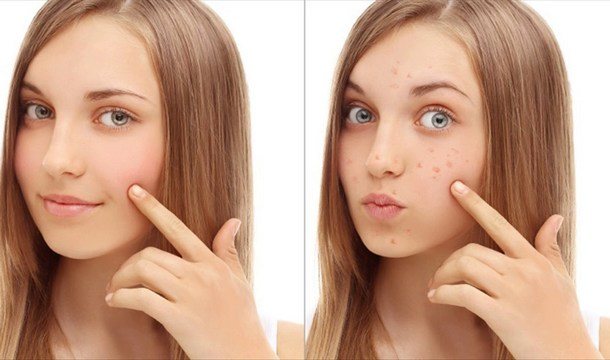
Autohemotherapy allows you to get rid of acne on your face
Autohemotherapy is also effective for premature skin aging in women over 30 years of age. It will help cope with acne. For a number of skin pathologies, the technique helps eliminate symptoms and improve the quality of life.
On a note! The effectiveness of autohemotherapy in the treatment of acne is estimated by cosmetologists at 80%.
If there are gynecological problems, after using the technique, stabilization of menstruation is noted. The body is cleansed of waste and toxins. After autohemotherapy, tissue regeneration occurs much faster, that is, ulcers, wounds, and fractures heal much faster.
Contraindications
Any medical or traditional treatment method has its contraindications. But autohemotherapy practically does not have them. It is not recommended to carry out the course during pregnancy, mental pathologies, severe forms of arrhythmia, and oncological pathologies. Epilepsy can also be a contraindication. The procedure cannot be performed in case of acute heart attack, active tuberculosis, stroke, or severe renal failure.
Autohemotherapy is not carried out during menstruation, since the body suffers from blood loss. It should not be used while breastfeeding.
Large volumes of blood should not be administered! If you immediately introduce a large amount of biomaterial, swelling and inflammation appear at the injection site. The result is chills, fever, and muscle pain. The most important thing is to ensure that the doctor performs the procedure under completely sterile conditions.
Attention! In case of problems after autohemotherapy procedures, you need to inform your doctor about them as soon as possible so that he can identify their cause and adjust the course of treatment with venous blood.
The method has virtually no contraindications, which has been proven by a number of studies. The procedure is well tolerated and is performed within a few minutes. And it has virtually no side effects - in most cases they are short-lived. But there may be complaints of chills, swelling in the injection area, pain when walking or sitting in one place, and fever. Rarely, inflammatory reactions occur (usually due to improper procedure). It is worth refusing procedures if symptoms persist for a long time.
Important! Before deciding on autohemotherapy, it is advisable to undergo a full medical examination.
After the procedure, the patient may complain of discomfort at the injection site. This is due to the fact that blood cannot be quickly absorbed into the muscles due to its structural characteristics (high density). This is why lumps may be felt at the injection site for a long time.
Reviews from patients and doctors
Most patients respond positively to autohemotherapy. This procedure helps:
- improving performance;
- increasing vitality;
- removing waste and toxins from the body;
- normalization of the blood circulation process;
- improvement of metabolic functions;
- increasing the body's defense mechanisms;
- elimination of purulent processes.
Autohemotherapy allows you to get rid of skin problems, gastrointestinal disorders, and many gynecological ailments in a short period of time. Another important advantage is the low cost of the procedure.

What do doctors say about this treatment method? First of all, doctors warn that it cannot be used as independent therapy. It is better to use in combination with medications prescribed by a doctor. In addition, it is important to choose the right clinic for medical procedures. The final result largely depends on where to perform autohemotherapy. Many patients express dissatisfaction with the result. In most cases, this effect is precisely due to a dubious medical institution, where little attention is paid to the sterility of instruments and the qualifications of specialists.
Some patients, wanting to save money, decide to do without the help of a doctor. They choose to carry out the procedure at home. This approach is strictly prohibited, because it is quite easy to cause infection or complications. In addition, it is difficult for a non-specialist to accurately determine when it is necessary to adjust the dose to reduce the risk of negative reactions. It is not easy for an ordinary person to understand what to do if the temperature rises due to autohemotherapy or the development of allergies.
To perform all manipulations associated with the collection and subsequent administration of biological fluid, absolute sterility and appropriate knowledge in this area are required. Only an experienced doctor can guarantee the patient the safety of his actions and a positive therapeutic effect in the future. If you are prone to various allergic reactions in response to incompetent actions or infection, the consequences are usually severe. It is important to always remember them and not try to self-medicate, deciding to save the family budget.
Carrying out the procedure at home
The procedure can also be carried out at home, but in this case the responsibility for its execution will lie entirely with the one who performs it. Autohemotherapy is carried out at home only according to the classical scheme. But you need to have a number of general medical skills to perform autohemotherapy at home correctly!
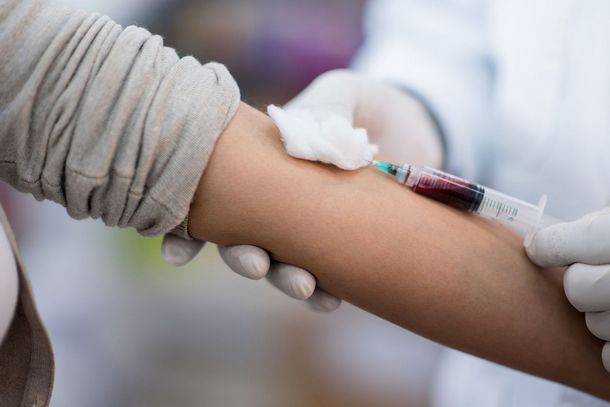
For a home procedure, you need to worry about having someone else perform it. It is not advisable to take your own blood and then inject it.
At home, it is also important to maintain sterility and make sure that someone performs the procedure - it is not advisable to take your own blood and then inject it. If you do something carelessly, then there is a risk of post-injection abscesses, inflammation, blood poisoning, etc. In any case, consulting a doctor before autohemotherapy will not hurt, because you need to take into account the possibility of a number of diseases and contraindications. Moreover, it is impossible to carry out the procedure using influence on the blood, for example, with ozone at home.
Tips and tricks
Before starting a course of autohemotherapy, you need not just consult a doctor, but undergo a full examination. Only in this case is it possible to make sure that there are no contraindications, and the technique can be safely applied. If the patient has chronic pathologies, then you need to seek advice regarding the possibility of autohemotherapy from a leading specialist.
If autohemotherapy is carried out to cope with chronic fatigue, it is recommended to carry it out with ozone. The same option is used in the treatment of acne and to improve immunity. For gynecological pathologies, bronchitis, and peptic ulcers, it is advisable to carry out the procedure with aloe extract. For psoriasis, autohemotherapy is done according to the classical scheme. To overcome allergies, it is recommended to conduct sessions not during an exacerbation of the reaction, but during the period of absence of exposure to the allergen, for prevention.
Autohemotherapy can also be carried out using novocaine. With its help, it is possible to improve the condition of arthrosis of the knee joints. And in case of infertility, doctors advise using hemopuncture. Blood injections with calcium are effective for improving the functioning of the heart and blood vessels, as well as bones, muscles, and joints.
Does transfusion of your own blood help with acne?
Among the contraindications to autohemotherapy, various types of skin rashes can be identified - these are simple pimples, severe acne, inflamed acne, and even boils. Some sources contain information that such treatment can give a visually noticeable effect in approximately 80% of cases. The positive result is explained by the ability of one’s own blood to activate the work of the entire body and the defenses in particular. After all, such a liquid contains not only useful elements, but also quite a lot of frankly harmful or opportunistic substances. Their introduction causes the immune system to perk up and begin to fight problems, including rashes.
Hemotherapy scheme
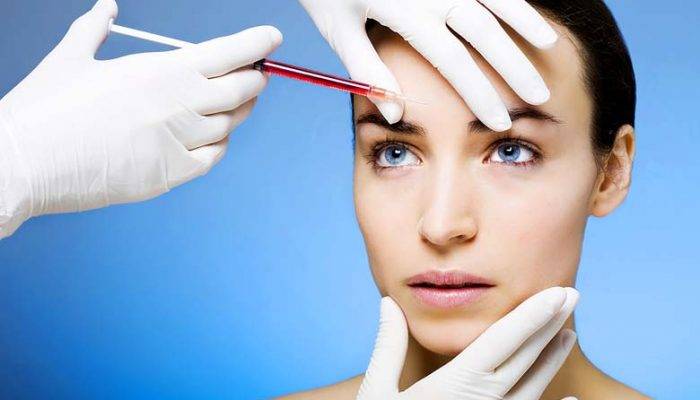
Today there are several schemes for autohemotherapy. To get rid of acne, doctors select the optimal method of treatment depending on the cause of acne, as well as the presence of additional complaints.
How is autohemotransfusion done for acne, furunculosis and acne?
Most often, dermatologists prefer the following treatment regimens:
- Classic. Blood is taken from the patient from a vein located in the arm, after which it is immediately injected into the gluteal muscle. For the first procedure, 2 ml of blood is used, for the second - twice as much. Therapy continues until the volume of administered blood is 10 ml. Injections are performed daily or at intervals of a day. Sometimes the doctor may recommend several procedures with the maximum volume, after which you will also need to gradually return to the initial dosage of 2 ml.
- Small with ozone. First, the doctor draws 5 ml of a mixture of ozone and oxygen into the syringe, then draws blood from a vein and injects the resulting mixture intramuscularly. The frequency of procedures and dosage are selected individually.
- Big with ozone. To perform this procedure, about 100-150 ml of the patient’s blood is drawn inside a special sterile container, then an anticoagulant and a mixture of ozone and oxygen in a volume of about 100-300 ml are added to it. The resulting mixture is mixed and then administered to the patient intravenously.
Stepped according to Reckeweg. This procedure involves enriching venous blood with homeopathic medicines, after which the mixture is administered intramuscularly. The manipulation is performed in four stages. The main difference between this procedure is that the patient’s blood is used in a minimal volume (about 0.1-0.2 ml). In total, doctors advise undergoing about 7-10 procedures at intervals of a week. Biopuncture. With this method of autohemotherapy, blood is injected into the patient at the locations of acupuncture points.
Treatment with an antibiotic

If there is a mass of pimples on the patient’s face or body, as well as periodically appearing boils, doctors may recommend autohemotherapy with an antibiotic. With this treatment, an antibacterial drug is added to the venous blood, after which it is injected intramuscularly. This tactic allows you to achieve quick and noticeable positive results:
- Inflammations begin to disappear from the skin literally the next day after the course of therapy.
- Existing carbuncles or boils become less noticeable.
- The pathogenic microorganism that causes rashes is eliminated from the blood. Accordingly, the disease does not recur.
Autohemotherapy with an antibiotic is not necessary in every case. However, if there are appropriate indications, it will indeed give a more lasting and noticeable effect than the classic one. But the same result can be achieved with the help of internal administration of a properly selected antibiotic.
